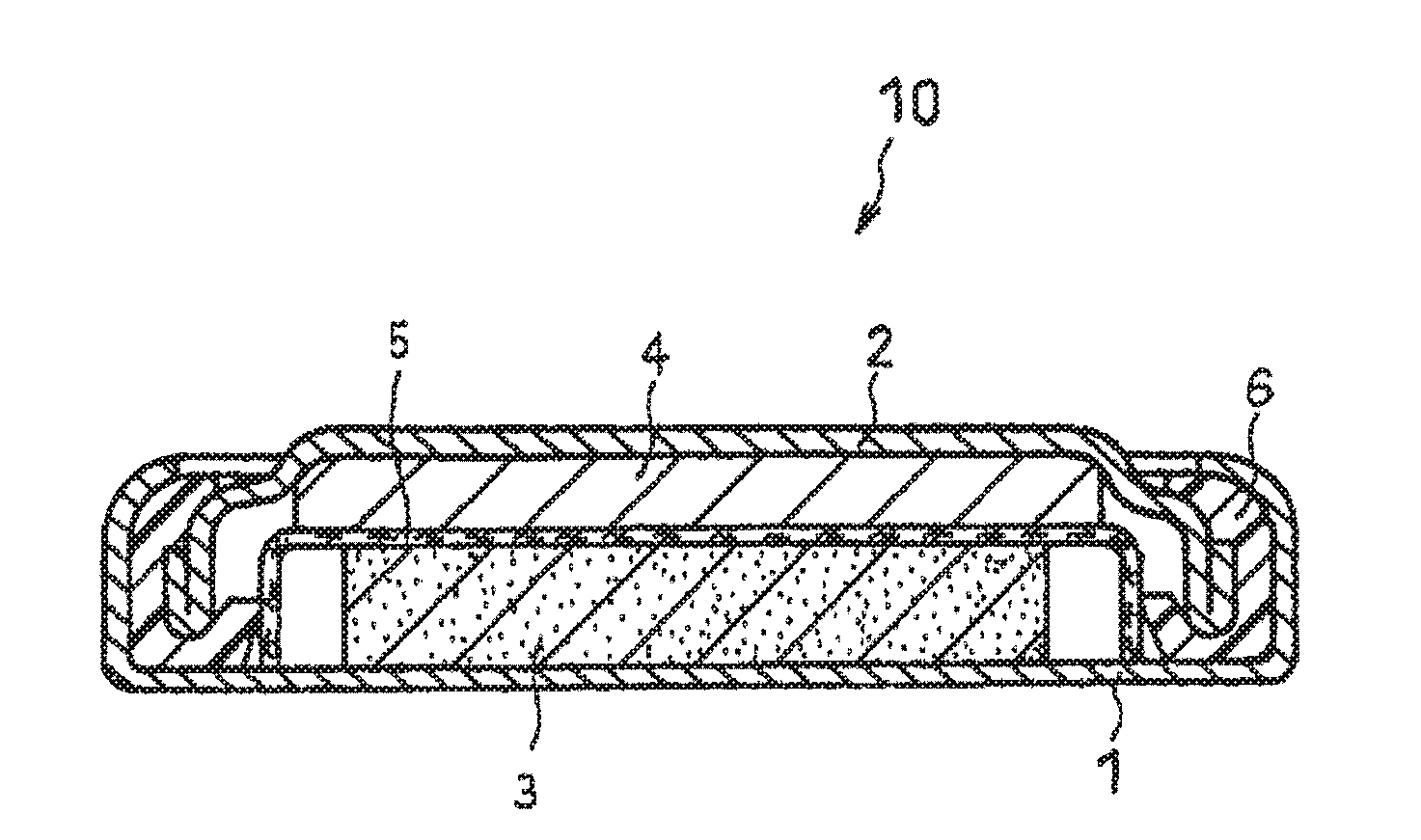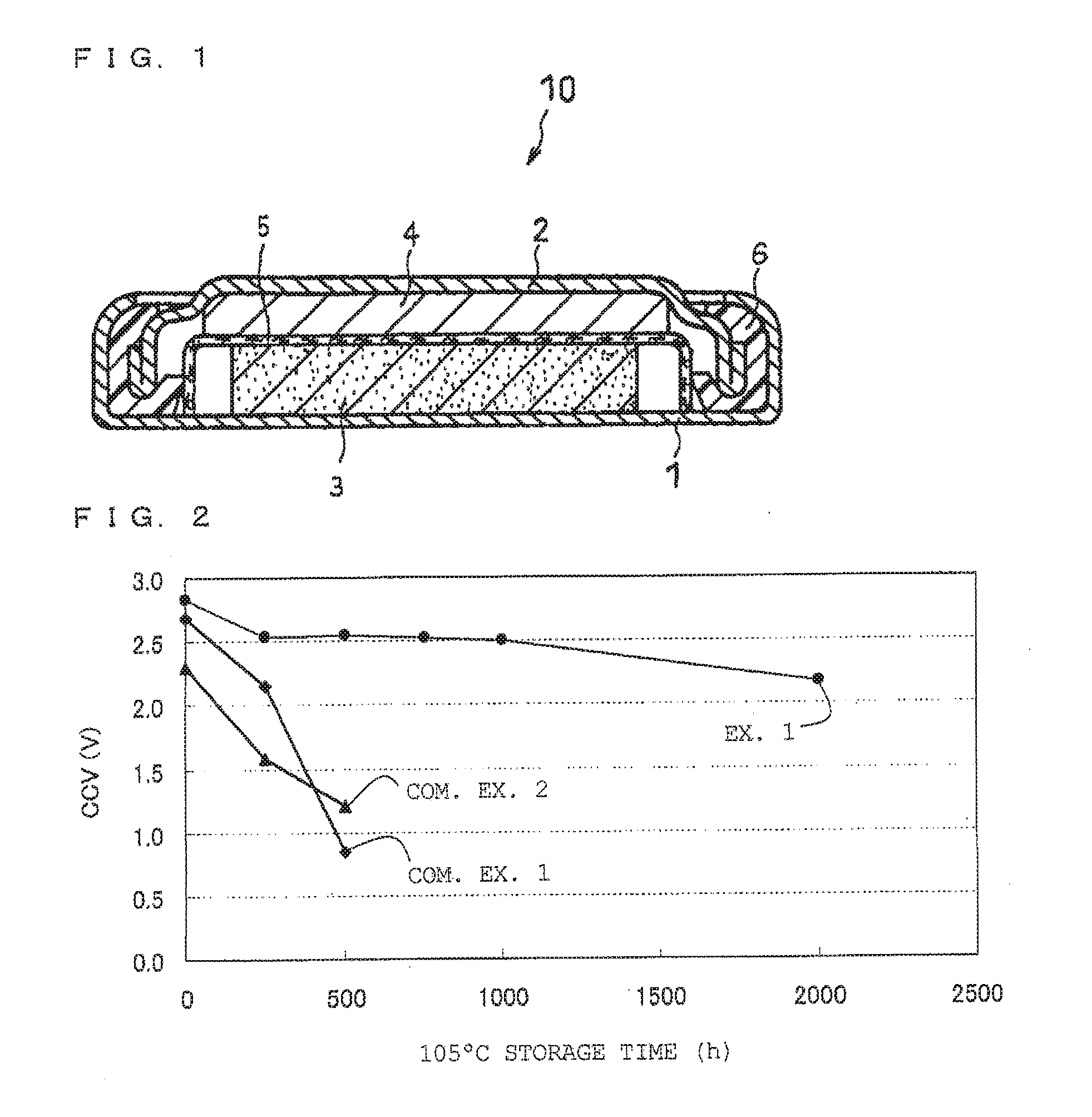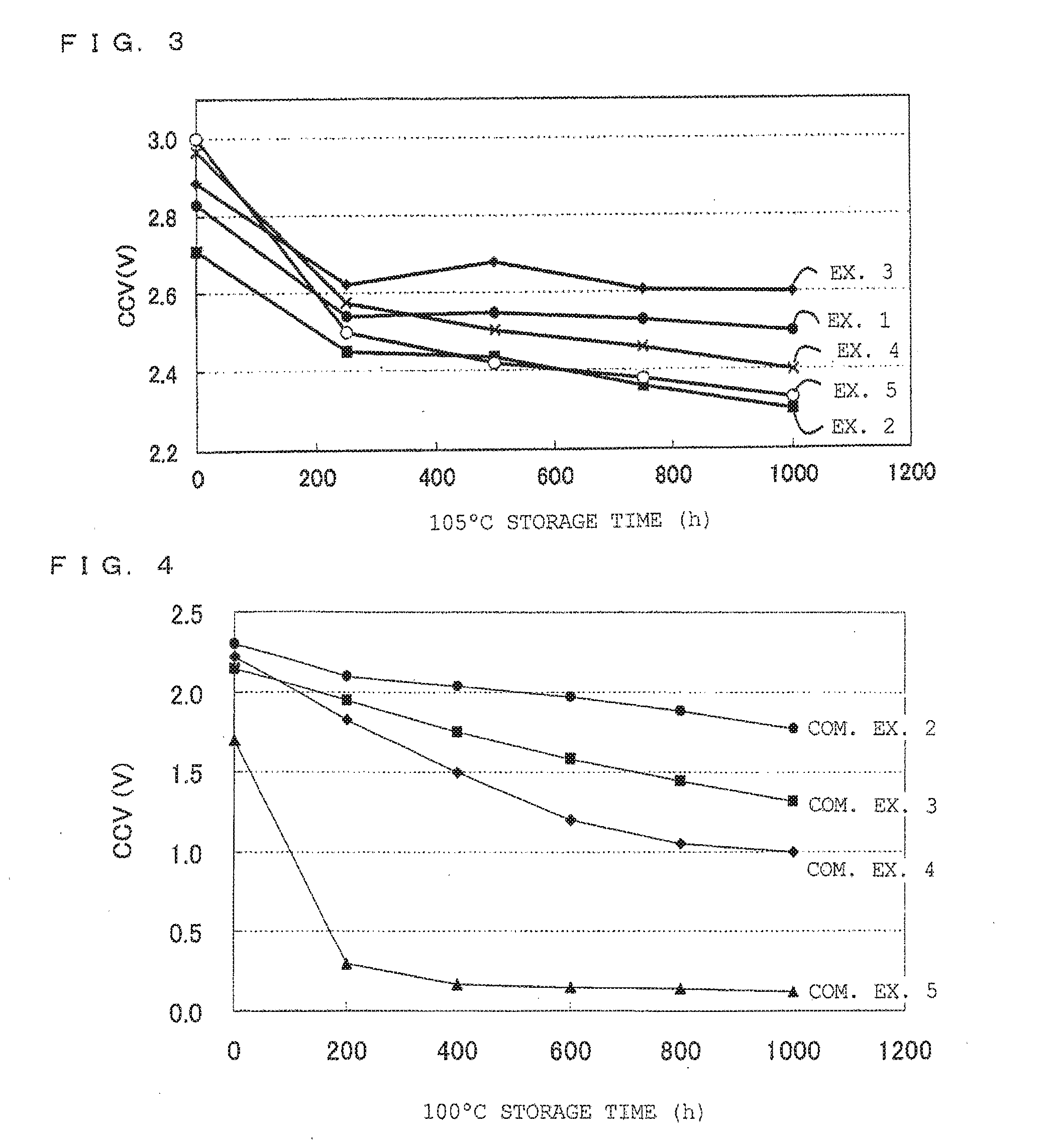Lithium battery
- Summary
- Abstract
- Description
- Claims
- Application Information
AI Technical Summary
Benefits of technology
Problems solved by technology
Method used
Image
Examples
example 1
(1) Production of Positive Electrode
[0056]To 100 parts by mass of manganese dioxide, 50 parts by mass of Ketjen black serving as an electrically conductive material and 5 parts by mass of polytetrafluoroethylene (PTFE) serving as a binder were added and well mixed together, to prepare a positive electrode material mixture. The positive electrode material mixture was compacted into a disc shape of 15 mm in diameter and 3.0 mm in thickness, and then dried at 200° C. Thereby, a positive electrode was produced.
(2) Production of Negative Electrode
[0057]A 1.0-mm-thick metal lithium sheet was out into a disc shape of 16 mm in diameter, which was used as a negative electrode.
[0058]On the other hand, acetylene black (average particle size of primary particles: 35 nm) as a carbon material was well mixed with water and ethanol, to prepare a dispersion. The dispersion was sprayed and applied onto one surface of a 0.25-mm-thick polyphenylene sulfide (PPS) nonwoven fabric (basis weight: 25, g / m2)...
example 2
[0063]A coin lithium battery (Battery A2) was fabricated in the same manner as Battery A1, except that the proportion of LiBF4 in the non-aqueous electrolyte was changed to 1.0 mass %.
example 3
[0064]A coin lithium battery (Battery A3) was fabricated in the same manner as Battery A1, except that the proportion of LiBF4 in the non-aqueous electrolyte was changed to 3.0 mass %.
PUM
 Login to View More
Login to View More Abstract
Description
Claims
Application Information
 Login to View More
Login to View More - R&D
- Intellectual Property
- Life Sciences
- Materials
- Tech Scout
- Unparalleled Data Quality
- Higher Quality Content
- 60% Fewer Hallucinations
Browse by: Latest US Patents, China's latest patents, Technical Efficacy Thesaurus, Application Domain, Technology Topic, Popular Technical Reports.
© 2025 PatSnap. All rights reserved.Legal|Privacy policy|Modern Slavery Act Transparency Statement|Sitemap|About US| Contact US: help@patsnap.com



